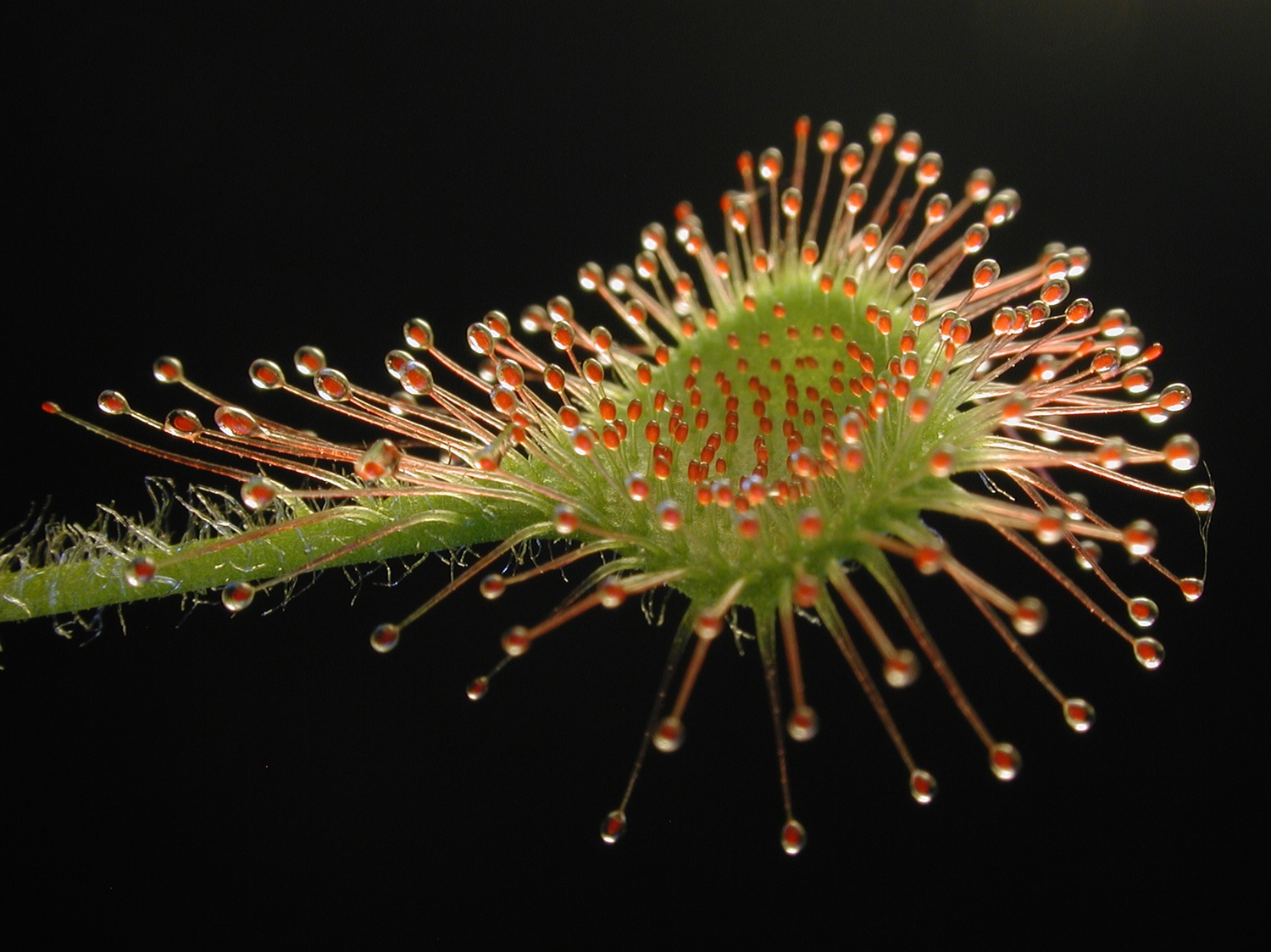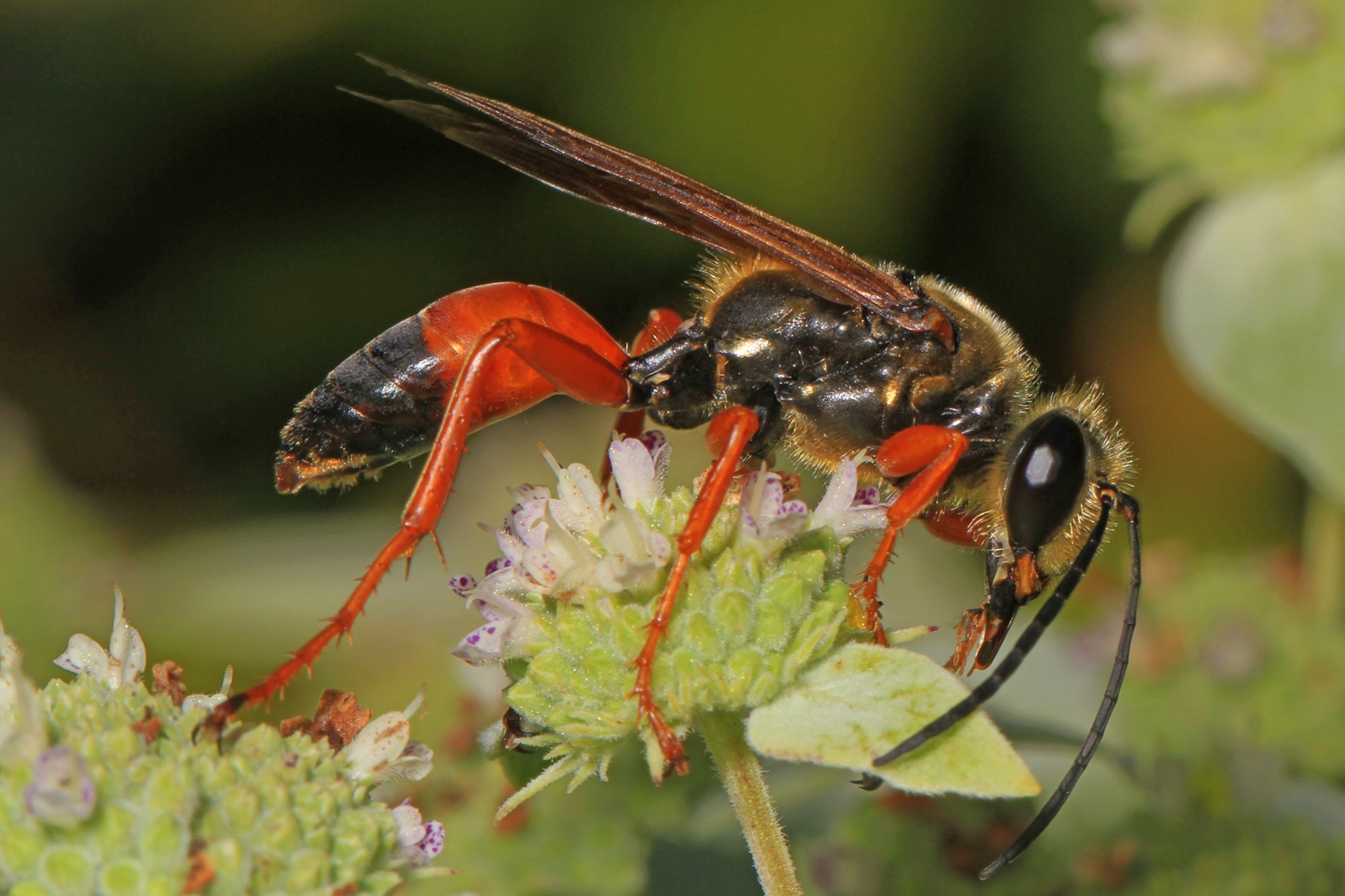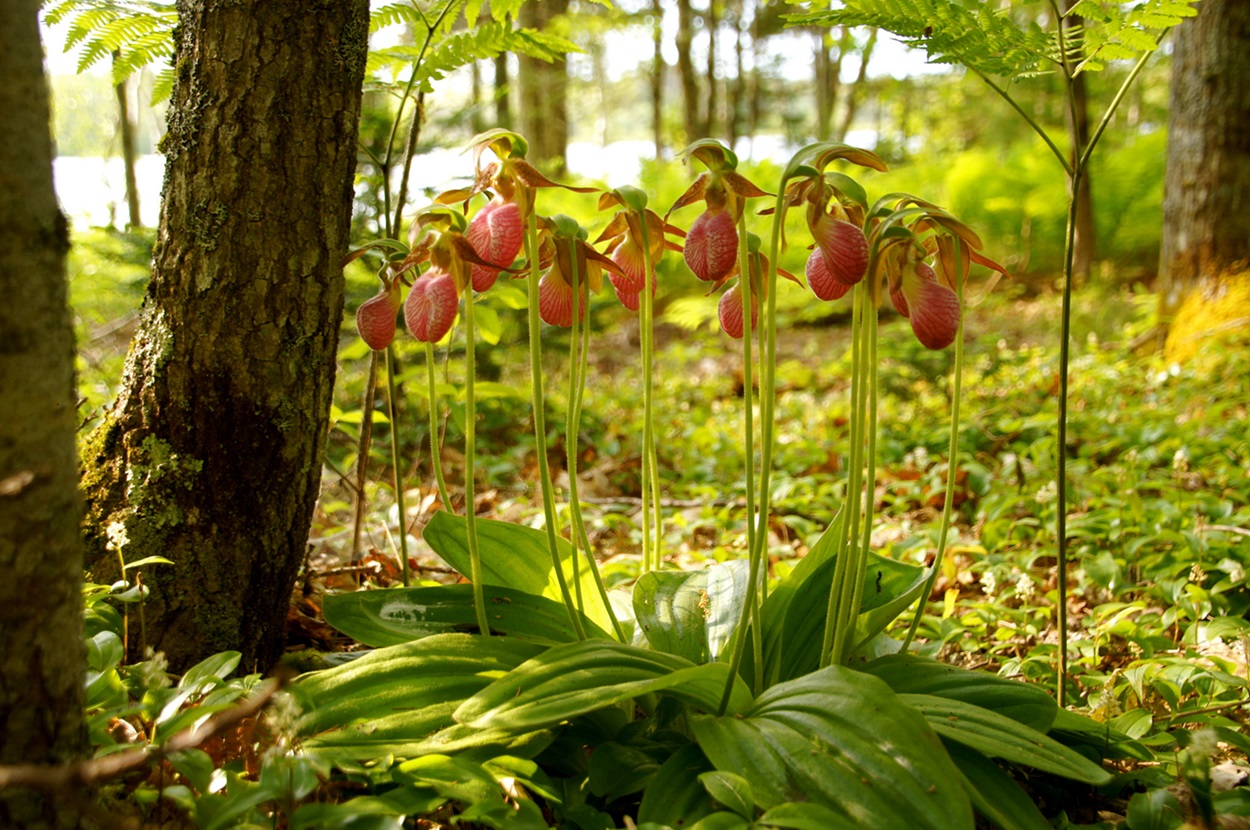Pollinators are animals that move pollen between flowers, enabling plants to exchange genetic information to make seeds and fruit. Canada’s ecosystems and agricultural systems depend on them. Thousands of species of pollinators live in Canada, including native bees, wasps, butterflies, moths, flies, beetles and birds such as hummingbirds. Pollinators are essential for both their agricultural and ecological services, and for crops such as apples, blueberries, canola, alfalfa, squash and melon. Honeybee pollination was valued at about $3.18 billion in 2021 in Canada alone. In wild ecosystems like forests, prairies and wetlands, pollinators help native plants reproduce, which is critical for maintaining biodiversity and food webs.

Types of Pollinators in Canada
Bees
Bees are among the most well-known pollinators in Canada. There are around 900 native bee species, including social bees like bumblebees and solitary bees such as mason, leafcutting and mining bees. Honeybees, however, are not native to Canada. They are a domesticated species which were introduced from Europe and Africa and are managed by beekeepers.
Bees are especially good at pollination because many of them are pollen specialists and rely exclusively on nectar and pollen as a food source, which means they must visit a large number of flowers in a given day. Bees also have special adaptations for collecting and carrying pollen, such as “pollen baskets” on their back legs, and branched hairs on their body that are better able to adhere to pollen grains. While social bees tend to be flower generalists, solitary bees are often flower specialists, visiting only a few species of plant. For example, the Pruinose squash bee (Peponapis pruinosa) relies on flowers in the squash and cucumber family and is essential to their pollination.
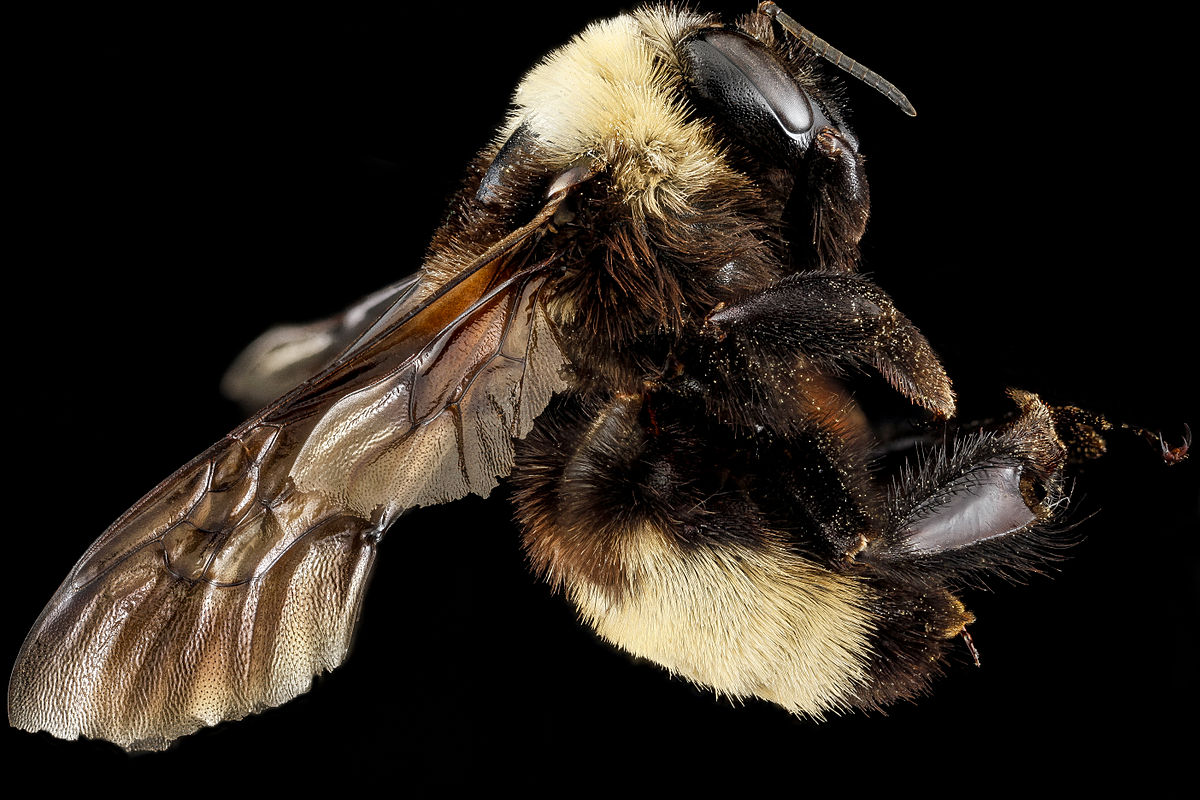
Wasps
Although often overlooked as pollinators, wasps are known to be excellent pollinators of a wide variety of species and even co-evolved to pollinate specific plants. Just like bees, many wasps visit flowers to feed on nectar and inadvertently transfer pollen in the process. One study published by the Royal Entomological Society even suggests that certain wasps can be as effective as bees at pollination in terms of pollen transfer.
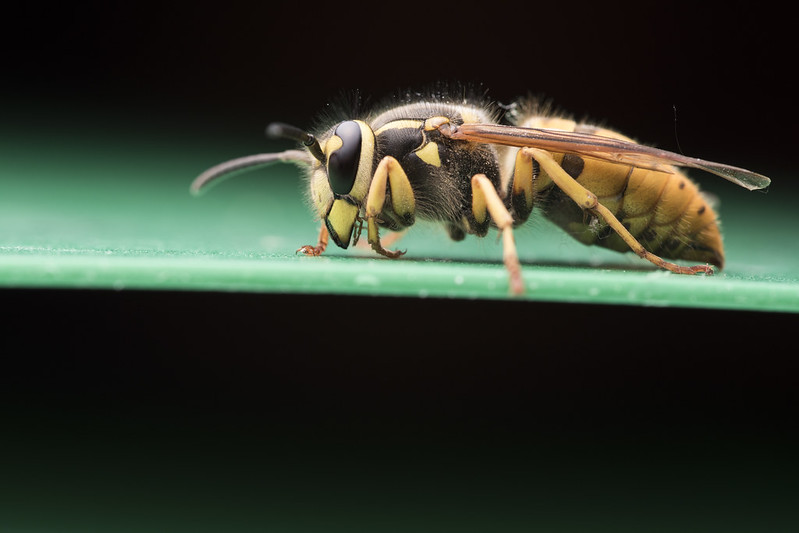
Flies
Flies, especially hoverflies, are abundant pollinators in Canada, with some species rivalling bees in effectiveness. They are especially important in early spring, when they are among the first insects to emerge. Flies are also crucial in environments that may have fewer bees, such as in alpine and arctic environments, where even mosquitoes contribute to pollination. Around 39% of crop pollination is attributed to insects other than bees, mostly flies.

Butterflies and Moths
Butterflies and moths play a key role in pollination by feeding on flower nectar, incidentally collecting and spreading pollen in the process. Canada has approximately 5,000 species of moths, which are excellent pollinators that are especially important for night-blooming flowers.
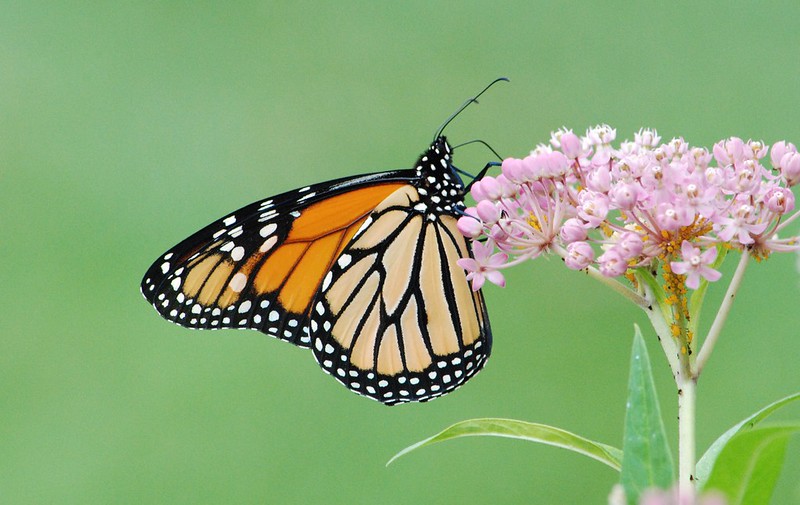
Birds
Hummingbirds feed on nectar by hovering at tubular flowers (like columbines and penstemons). In the process, pollen sticks to their heads and bills and is transferred to the next flower. Some plants have evolved specifically to attract hummingbirds for pollination. In addition to hummingbirds, other birds also contribute to pollination, particularly among trees. Even birds that aren’t visiting flowers for nectar, such as those hunting insects attracted by flowers, can help spread pollen.

Did you know?
Bats are also important pollinators in many regions around the world. In fact, some species of mango, banana, durian, guava and agave rely on bats for pollination. In Canada, however, bats are insectivorous and do not visit flowers.
Ecological and Agricultural Importance
Agriculture
Pollinators are integral to Canadian agriculture, improving crop yields and quality. Canada is a global leader in pollinator-dependent crops like canola and blueberries. Pollination improves fruit set and seed production for apples, cherries, berries, squash, cucumbers and many vegetables. For example, in 2021, honeybees were estimated to have contributed about $218 million to Canada’s apple harvest and $280 million to blueberry production. Farmers often rent domesticated honeybee hives to ensure effective pollination.
Wild pollinators also play an important role in crop production. One study found that about 61% of crop pollination came from native insect pollinators.

Biodiversity
Pollinators not only contribute to biodiversity themselves, but also support Canada’s wild ecosystems by helping native flowering plants reproduce. These plants, in turn, provide food and shelter for many species of wildlife. This network of interactions supports biodiversity and helps maintain healthy, genetically diverse plant populations, enhancing resilience to environmental stresses such as climate change.

Threats to Pollinators in Canada
Pollinators face numerous threats, both within Canada and around the world.
One of the major threats to pollinator populations in Canada is pesticide use. While pesticides are meant to target harmful pests that damage crops, they can also harm beneficial species, including pollinators.
Human activities that alter the environment also pose significant risks to pollinators. Clearing natural habitats for agriculture, forestry, road-building and urban development removes critical spaces for pollinators to live and forage. Canada loses tens of thousands of hectares of prairie and other wild lands every year, including approximately 60,000 ha of prairie grassland annually. Habitat fragmentation further complicates pollinators' ability to move between sites, limiting their access to a variety of resources.
Climate change is already having an impact on pollinator populations in Canada. Rising temperatures and changing rainfall patterns are expected to disrupt the timing between pollinators and the plants they pollinate. For example, some plants may bloom earlier than usual, and if pollinators are not active at the same time, pollination will not occur. As a result, many species of plants and pollinators may struggle to adapt to these changes.
Conservation
Conservation efforts to support healthy populations of pollinators rely on widespread habitat protection, legislation and individual action. Individual actions which may help pollinators include:
- Planting a variety of native flowers in gardens and other outdoor spaces.
- Providing nesting habitat such as patches of bare ground, logs, stones or bundles of hollow stems.
- Avoiding or reducing pesticide use.
- Letting flowers grow by skipping the occasional mow and leaving patches of clover, dandelions and other flowers on lawns.
- Leaving fallen leaves and dead flower stalks in the fall to provide pollinators with a safe place to overwinter.

 Share on Facebook
Share on Facebook Share on X
Share on X Share by Email
Share by Email Share on Google Classroom
Share on Google Classroom




